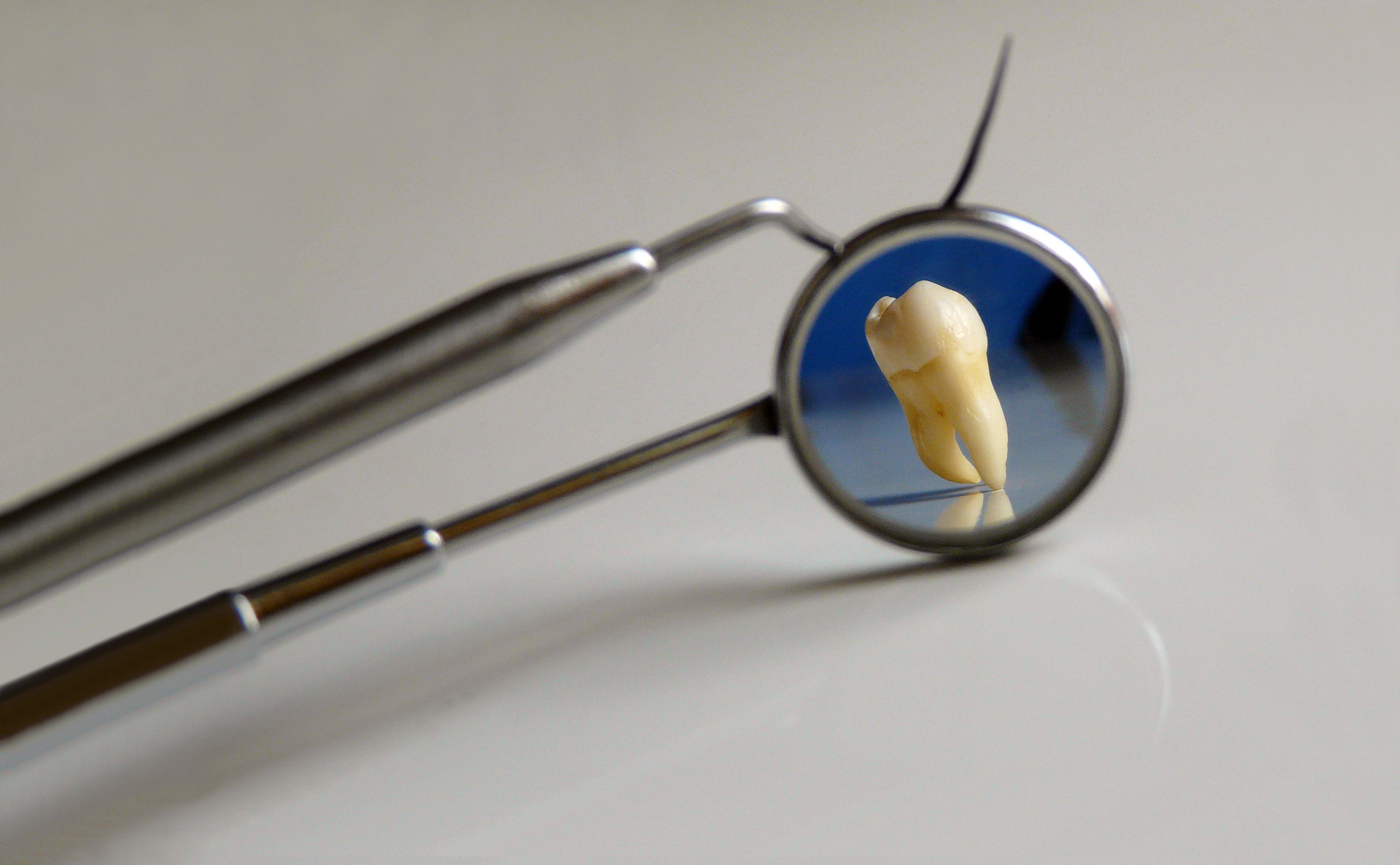How to Get Broken Teeth Fixed As Quickly As Possible
Nobody wants to deal with a broken tooth. It’s a scary situation. But it does not have to end in dental disaster. Read this guide to find out what to do next.

Image by Partha S. Sahana on Flickr.
It is so easy to assume that a dental emergency will never happen to you. You’re too careful with your teeth. You don’t play sports. The dentist has always been very pleased with the condition of your mouth. Well, all of these things can be true and you can still end up with a broken, chipped, or fractured tooth. In fact, a remarkable five million teeth are unexpectedly knocked out every year.
While it may never happen to you, the only way to be prepared is to make sure that you know what to do in the event of an emergency. You wouldn’t have children and never bother to register with a medical clinic or surgery, just because you don’t believe that your kids will ever need one, so why would you do the same for your teeth? We all know that staying healthy and physically intact involves a degree of preparedness and knowledge.
This can be as simple as keeping the emergency number for your dentist in a drawer or on a corkboard at home. It just means knowing what to do if the worst does happen. So, the next time that you attend a routine check-up or appointment, ask your doctor for advice on the best response to a broken tooth. All dentist will say the same thing; the most important step of all is to inform somebody who can fix the problem.
As many dental emergencies are time specific (they can only be fully repaired if treated quickly), it is acceptable and expected that a person might not consult their regular dentist first. This is usually the case if the chip, crack, or fracture appears out of hours and the regular clinic is closed. In most cases, if the situation is serious enough, an emergency professional will be called out immediately. This does usually cost more than a standard check-up.
If the incident is not so serious that it cannot wait until the next day, the patient is usually given advice on how to keep the affected tooth clean. They can then head to their regular dentist and schedule a repair appointment. Ultimately, the response depends on the emergency, but the first step must be to seek advice, unless you are sure that the incident is not urgent. For example, if there is no blood and no pain, it is probably fine for you to wait.
The Various Different Ways to Break a Tooth
Every patient reacts differently to broken teeth. There are some people who panic and get very distressed, because they are afraid of losing a tooth. And there are others who understand that, while haste is definitely recommended, if a tooth is completely lost, this is not the end of the story. There are a whole host of repair and replacement options.
So, dealing with dental emergencies is really all about responding sensibly. Yes, a broken tooth (knocked out teeth especially) require urgent attention, but if there is nothing that you could have done to save the tooth, it is not worth getting in a panic about. The best example of this is when teeth get knocked out during sports. It is often impossible to locate them and, in this circumstance, re-implantation is not an option.
The question is, how do you know if your dental problem is a serious one? How can you tell if it needs urgent care or a standard procedure? Well, the two biggest warning signs are extreme pain and bleeding. The most common types of dental emergency then are knocked out teeth, cracked teeth, and cavities so severe that they have caused an infection. This last emergency (infection) can prove very dangerous for the rest of the body if not treated quickly.
The signs to look out for are, again, bleeding, swelling, and pain. If you have cracked or chipped a tooth, but it is still in place and causing no pain, you still need to call an emergency line or the number for your own dentist. Get some advice and make sure that it is not an emergency situation before you decide to delay treatment. If you have a facial swelling, describe its size and location.
Identifying Your Symptoms and Warning Signs
For patients who have had knocked out teeth, the pain is likely to be sudden and difficult to miss, so it will not be hard to notice this emergency. There will probably be a lot of blood and it may look quite scary. The thing to remember is that you cannot lose a dangerous amount of blood from a single wounded tooth socket; you will be fine, but you have to stay calm.
The more anxious and stressed out that you become, the faster your heart will race, and the more the wound will bleed. The first thing to do is find the missing tooth, if you can. Try not to touch the crown when you pick it up and handle it only at the root. It needs to be rinsed in cold water as soon as possible and placed gently in a glass of milk (you can use water, if needed).
If your tooth has been broken in this way (knocked out completely), it is absolutely imperative that you get to a dentist as quickly as possible. Now, this could be tricky if the emergency occurs out of hours, but you should have an emergency care number somewhere in your home. If you are fortunate enough for the situation to have occurred during the day time, find the nearest dental surgery or clinic (it does not matter if it is your regular surgery).
After two hours, the chance of a knocked out tooth being re-implanted and accepted by the mouth drops dramatically. So, you must get your tooth to the dentist very quickly. The best chance is for teeth that are re-implanted within half an hour of the incident. The situation is urgent enough that you should be able to walk into any local surgery, with your tooth in hand, and have a specialist perform a repair almost immediately.
Knowing How to Respond to Chipped and Cracked Teeth
For chipped, cracked, and fractured teeth, the situation is sometimes very different. If the tooth is still in the mouth (even if it feels loose), there is no hugely urgent need to rush to the dentist. This does not mean that you can delay treatment, only that you can safely wait a day or two if necessary. The exception is if a crack or jagged edge has caused lacerations to the mouth.
Any kind of cut inside the mouth, if deep enough, can get infected. You need to have this injury examined and treated by a dentist so that bacteria does not make its way into the wound. Unlike knocked out teeth, chips and cracked fragments are rarely recovered. They are usually swallowed accidentally or spat out absentmindedly. So, don’t worry about losing the pieces.
The dentist should be able to offer you a reconstruction or replacement of some kind. The most popular option for chipped teeth is dental bonding. This involves the dentist filling in the gap or lost space with a special substance. The substance is treated with an ultraviolet light and it hardens into the same texture, consistency, and strength of a natural tooth. Once set, the bonded composite does need to be filed and shaped so that it resembles a regular tooth.
A crown is provided if the chip or crack is too large for a bonded composite to be a viable repair. It is, essentially, a cap or ‘hat’ replacement. It has a hollow inside and is slipped over the remaining natural tooth structure. The downside to having a crown is that it often requires some of the surrounding healthy enamel to be removed too. Alternatively, the dental implant is a full tooth replacement that is screwed into an empty socket.
Understanding Why the Dentist Wants a Root Canal
Your dentist may recommend a full root canal as a way to repair a severe crack. This is usually advised if the break is so deep that it has damaged the pulp (inside tissue) of the tooth. It is a routine procedure, but it can take several hours and be quite fussy and labour intensive for dentists. For patients though, the use of an anesthetic makes the treatment pain free.
It is much more likely to be a boring session than a traumatic one, even though myths abound about the stresses and strains of root canals. The reality is somewhat more sober, so do not be afraid to head to the chair if your dentist believes that this is a good option. The first thing that will happen, after your mouth has been numbed, is the dentist will drill a hole in the tooth.
This will be a small opening in the top of the enamel. However, it needs to be wide enough and deep enough for the dentist to reach right down to its very core. So, they will insert a special file and open up the tunnel. Once again, you should not feel any pain at all. Once the pulp is accessible, the dentist will use a suction tool to remove it all. This part of the root canal procedure empties the broken teeth.
You are left with an empty structure, but no more damaged pulp tissue. The risk of infection will be almost completely gone and your tooth will be ready to heal. As part of this recovery process, it is filled with a material called gutta percha. This wonder stuff keeps the empty tooth strong and it creates a barrier designed to keep germs out. In most cases, a temporary crown is then slipped over the top of the tooth.
It is not unheard of for a dentist to move straight on to fitting a permanent crown, but most like to give the patient and themselves a rest. A root canal can take up to two hours, so expect to be sent home after scheduling a follow up appointment. If the dentist deems it necessary, they will give you antibiotics to fight against bacteria. However, this is usually only done if the patient is exhibiting signs of infection.
Checking for Signs of Infection in the Mouth
All dental injuries are at risk of turning into infections, because they involve wounds and lacerations. For example, knocked out teeth are especially susceptible, because the socket is left vulnerable and exposed. If any bacteria gets into the wound and the body cannot fight it off, an infection will develop. The good news is that this is very rare in patients who get their injuries checked out quickly.
In the event of a crack that is concealed or has only become apparent a while after the original incident, the risk of infection is slightly higher. This is because chewing and eating on a dental wound is a sure fire way to introduce bacteria. You should not worry, however, unless you have symptoms of infection. The most obvious is a facial or gum based swelling. If there are any growths of protrusions in or around your mouth, you need to consult a dentist.
They will give you antibiotics to control the infection. Once this has been done, repair work can begin. For patients with infected teeth, the most likely treatment is a root canal, because all of the damaged nerve tissue needs to be removed. In the rare event that a tooth is so decayed or so damaged that it cannot be saved, a full extraction needs to be performed. The good news is that this is not a common occurrence for those who seek help quickly.
Dental Membership Plans Can Help With Costs
You might be worrying about the cost of emergency dental care. If the accident has taken you completely off guard, you are unlikely to have set money aside to deal with the expense. Fortunately, a reliable dental membership plan can help you to balance the costs and meet the price for a root canal and crown, or other procedure.
The one thing that you must not do is delay or avoid treatment for a broken tooth because you are worried about not being able to afford it. The incident is classed as an emergency, particularly if it involved a trauma, strike, or blow of some kind. It needs to be examined quickly. The faster you get a broken tooth repaired, the better your chances of having a repair that lasts a long time and stays strong and durable.
Do not be afraid to talk with your dentist about payment options. There may be a number of different ways to stagger payments or defer some costs until you can afford to meet the balance. It is always worth asking before you get too stressed or start to panic about the situation. Remember that you dentist is there to help you. They have the best interests of your teeth at heart and your care is their top priority.
For patients with dental phobias, broken and knocked out teeth are especially traumatic. They come with the knowledge that a visit to the dentist is unavoidable. The best way to approach it is to take a friend or family member with you to the surgery. The dentist should not mind if they sit in the treatment room with you for emotional support. If it helps you to relax, listen to your favourite songs on an iPod or other music player while the dentist fixes your teeth.
Important Advice on Avoiding Dental Injuries
There are a few things that you can do to significantly reduce your risk of developing a broken tooth. The first is to always wear a mouth guard when playing any kind of contact sport. It might be rugby, lacrosse, hockey, soccer, or wrestling; whatever you play, protect your teeth. You can pick up mouth guards in pharmacies, supermarkets, and sports shops, so there is no excuse for leaving your teeth vulnerable to damage.
The second most dangerous thing that you can with your teeth is opening bottles and jars and tearing packets. Your teeth simply weren’t meant to support this kind of action. Every time that you unscrew a bottle with your mouth, you are risking a deep crack. And to avoid it, you just have to be sensible and ask somebody stronger than you for assistance. Or, get up and find the scissors if you need to open a package. It really is that simple.





